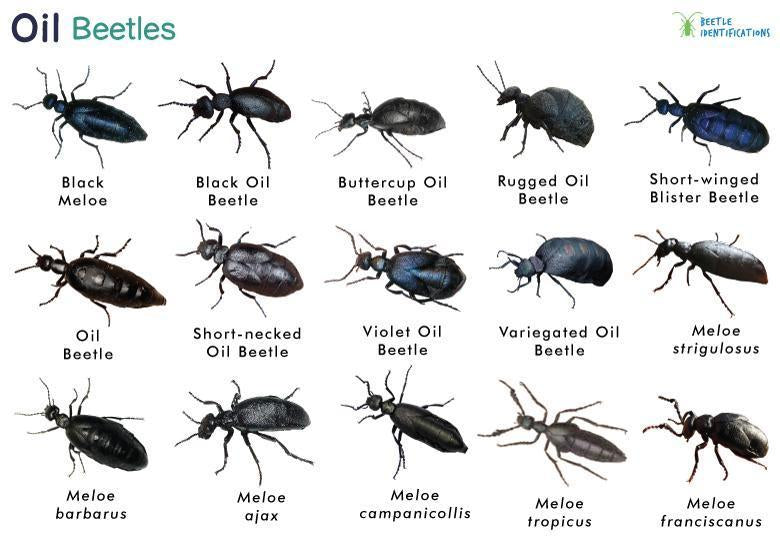
Meet the oil beetle, an insect that oozes deception—literally. When threatened, this strange beetle excretes a toxic, oily substance from its joints, making predators think twice before taking a bite. But that’s not even the weirdest thing about it. Its larvae are master hitchhikers, tricking bees into giving them a free ride to their nests!
What’s an Oil Beetle?
Oil beetles belong to the Meloe genus, a group of blister beetles found across Europe and North America. They have soft, oversized abdomens, short wing covers (elytra), and a slow, lumbering walk. Unlike typical beetles, they don’t fly—because who needs wings when you have chemical warfare?
Oozing Defense Mechanism
When disturbed, oil beetles release a bright yellow, oily substance from their leg joints. This toxic liquid contains cantharidin, a blistering agent that deters predators. It’s potent enough to cause skin irritation in humans and is the same chemical used in traditional wart removal treatments. Moral of the story? Don’t touch an oil beetle unless you want an itchy reminder of your encounter!
Fun Fact: The Ultimate Impostors
Oil beetle larvae (called triungulins) are sneaky little hitchhikers. They climb onto flowers and wait for an unsuspecting bee to visit. When the bee lands, the larvae latch on and ride it back to the hive, where they feast on the bee’s pollen stores and even its young. Talk about freeloading at its finest!
Where to Spot Them
Oil beetles are often found in meadows, grasslands, and sandy areas, particularly in spring and autumn. They prefer warm, open habitats where solitary bees are abundant—after all, their larvae need a ride! Look for their bulky, glossy bodies crawling along the ground. You can even occasionally find them in major cities, lumbering along warm sidewalks on summer evenings.
Why They’re Cool
The oil beetle is a chemical-wielding, trickster of the insect world. Its toxic defense keeps predators at bay, while its larvae pull off one of nature’s most bizarre cons. Whether it’s oozing toxins or tricking bees, this beetle proves that sometimes, survival is all about deception.
